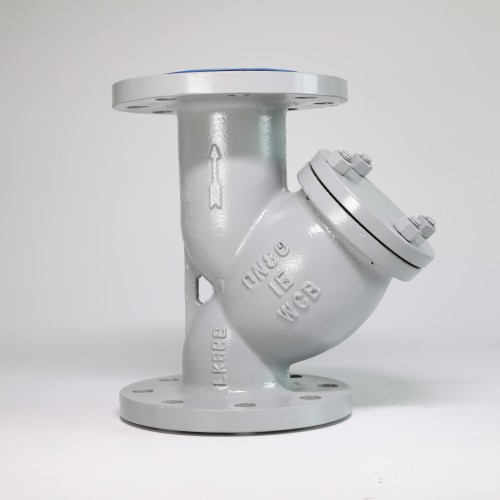pn6 flange
Understanding PN6 Flanges A Comprehensive Guide
Flanges are essential components in piping systems, providing a method for connecting pipes, valves, pumps, and other equipment in a secure and reliable manner. Among the various types of flanges, the PN6 flange is particularly noteworthy due to its specific pressure rating and applications. In this article, we will explore what PN6 flanges are, their specifications, applications, advantages, and best practices for installation.
What is a PN6 Flange?
The term PN stands for Pressure Nominal and is commonly used in Europe to denote the pressure rating of a flange. The PN6 flange indicates a nominal pressure of 6 bar (approximately 87 psi), which signifies the maximum pressure that the flange can safely handle at a specified temperature, typically around 20°C (68°F). These flanges are classified under the standard flange types known as EN 1092-1, which is widely adopted in various industries.
Specifications of PN6 Flanges
PN6 flanges come in various materials, including carbon steel, stainless steel, and plastic, depending on the application requirements. Their designs can be flat, raised face, or ring-type joint, accommodating a range of sealing requirements. Key specifications to consider when selecting a PN6 flange include
- Dimensions The dimensions of PN6 flanges can vary based on the pipe size they are intended to connect. They typically conform to standard dimensional practices, ensuring compatibility across different manufacturers. - Materials Common materials for PN6 flanges include
- Carbon Steel Offers a good combination of strength and cost-effectiveness. - Stainless Steel Provides excellent corrosion resistance, making it suitable for chemical and food industries. - Duplex and Super Duplex Ideal for highly corrosive environments, combining strength and corrosion resistance.
- Sealing Faces Flanges can come with different sealing face types, such as smooth, raised faces, or grooved surfaces, which affect the sealing performance and application suitability.
Applications of PN6 Flanges
PN6 flanges find widespread use in various industries, including
- Water and Wastewater Management Used in pumping stations, treatment facilities, and pipelines for water distribution and waste management. - Chemical Processing Employed in connections between reactors, storage tanks, and piping where moderate pressure is required. - HVAC Systems Utilized in heating and cooling systems, connecting pipes and various components like chillers and condensers. - Oil and Gas Sometimes used in lower-pressure applications within the oil and gas sector, depending on the specific conditions.
pn6 flange

Advantages of PN6 Flanges
The use of PN6 flanges comes with several advantages
1. Cost-Effective PN6 flanges are typically less expensive than higher-rated flanges, making them an economical choice for many applications. 2. Easy Installation Their standard design simplifies the installation process, allowing for quicker assembly and disassembly.
3. Versatility Available in various materials and designs, PN6 flanges can be adapted to meet a broad range of application needs.
4. Reliability The stringent manufacturing standards and pressure ratings ensure that PN6 flanges deliver reliable performance under normal operating conditions.
Best Practices for Installation
To ensure optimal performance and longevity of PN6 flanges, adhere to the following best practices during installation
- Surface Preparation Ensure that the mating surfaces are clean and free from debris, oil, and contaminants to achieve a proper seal. - Alignment Carefully align the flanges to avoid stress and maintain even pressure during bolting.
- Torque Specifications Use the appropriate torque specifications for bolting to prevent over-tightening or under-tightening, which can lead to leaks or mechanical failure.
- Regular Maintenance Conduct periodic inspections for signs of wear, deformation, or leaks to address potential issues before they escalate.
Conclusion
In summary, PN6 flanges are a critical component of various piping systems, offering a balance of reliability, cost-effectiveness, and versatility. Understanding their specifications, applications, and installation best practices ensures that they perform efficiently in their intended environments. Whether you work in water management, chemical processing, or HVAC systems, knowledge of PN6 flanges will empower you to make informed decisions in your projects.
-
Breakthrough in Domestic Low Temperature Valve Technology in ChinaNewsAug.18,2025
-
From Machinery to Intelligent Brain: The Digital Transformation Wave of the Valve IndustryNewsAug.18,2025
-
PCVEXPO 2025NewsAug.18,2025
-
The Key to Fluid Control: Exploring the Advantages of Ball Valves in Industrial SystemsNewsJul.09,2025
-
The Versatile World of 1, 2, and 3 Piece Ball ValvesNewsJul.09,2025
-
Stainless Steel Ball Valves: The Ideal Choice for Efficient Flow ControlNewsJul.09,2025
-
Optimizing Fluid Control with Ball Float ValvesNewsJul.09,2025




